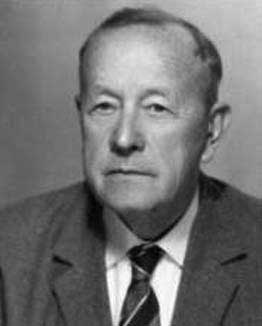.
Ivo Lah

Ivo Lah (also known as Ivan Lah; Štrukljeva vas near Cerknica, Austria-Hungary, now Slovenia, September 5, 1896 – March 23, 1979, Ljubljana, SFR Yugoslavia, now Slovenia) was a Slovenian mathematician and actuary, best known for his discovery of the Lah numbers in 1955.
Lah attended elementary school in St. Vid nad Cerknico and in Ljubljana. Later he enrolled in the Klasicna gymnasium in Ljubljana where he graduated top of the class in 1915. He spent 1918 at the University of Vienna and seven semesters at the University of Zagreb in the period 1919-1922. He completed his studies of mathematics and physics in Zagreb on April 28, 1925. At the same time he was studying at the School of Commerce and Traffic in Zagreb with a state exam on March 3, 1923. Before finishing high school Ivo Lah volunteered for the Austro-Hungarian army to defend the western borders of Slovenia. In the years 1915-1918 he was a Lieutenant in the Austrian army on the front against Italy.
After World War I he served as a volunteer in the Koroska Legion defending and shaping the Yugoslavian border with Austria. From April to June 1921 he was an Assistant for Mathematics at the Forestry Faculty of the University of Zagreb. From then until 1950 he was employed at the Social Security Foundation in Ljubljana, Zagreb and Belgrade, after which he was worked at the Yugoslavian Federal Statistical Office in Belgrade until his retirement on December 31, 1956.
The Adriatic Insurance Company (Riunione Adriatica di Sicurita) based in Trieste sent him to Vienna in the years 1927-1928 to study personal insurance. As a representative of the Society of Actuaries of the Kingdom of Yugoslavia he attended the International Congress of Actuaries in Rome (1934) and in Paris (1937).
In 1943 he was invited to Rome as an Assistant Dean of the Faculty of Statistical, Demographic and Actuarial Sciences where he stayed only a month due to World War II. From 1933 until 1941 he was an active member of the Society of Actuaries of Yugoslavia. In the years 1937-1941 he was the founding editor of the Journal Glasnik udruzenja aktuarjev Kraljevine Jugoslavije. Due to his scientific publications Ivo Lah became a correspondent of member of several international institutions from Portugal, Switzerland, Belgium, Italy, Germany and France.
Since 1932 when Ivo Lah became in charge of Statistics of Social Security in Slovenia he connected his work with studies at the University of Ljubljana. Students were able to prepare Seminars and other projects in Statistics. Based on the Statistics of Social Security several Doctoral Theses were written. Ivo Lah worked in practical Demographics and Statistics. Based on demographic tables he was able to prepare the so-called "computational bases" for personal life insurance and retirement insurance of employees.
His main work is a trilingual book Racunske osnovice zivotnog osiguranja written in Croatian, Russian and French and published in Zagreb in 1947. Because of a quote in Latin: Natura non facit saltus (Nature does not make leaps) the book was proclaimed "antimarxist", taken out of circulation and later, in 1951, was mostly destroyed. Ivo Lah was able to save some copies of the book. It is a tragic irony that he was later serving as a member of the Yugoslav delegation negotiating treaties with Italy, Hungary, Austria and West and East Germany. Racunske osnovice withstood the criticism of actuaries during the negotiations in Rome, Bonn and Vienna and he was able to get full Social Security compensation for Yugoslavia from these countries. Ivo Lah was a prolific writer and he published several hundred newspaper articles.
His scientific bibliography contains about 120 items covering a wide spectrum of topics from Mathematics to Statistics, Demographics, etc. For instance one can find 10 items in Maths Reviews, and 19 items in Zentralblatt für Mathematik. His most important mathematical result, published in 1955, is the so-called "Lah identity" where he shows how the rising powers can be expressed in terms of falling powers. The reviewer of his paper was a leading combinatorialist of that time, John Riordan.
External links
* O'Connor, John J.; Robertson, Edmund F., "Ivo Lah", MacTutor History of Mathematics archive, University of St Andrews, http://www-history.mcs.st-andrews.ac.uk/Biographies/Lah.html .
Retrieved from "http://en.wikipedia.org/"
All text is available under the terms of the GNU Free Documentation License


